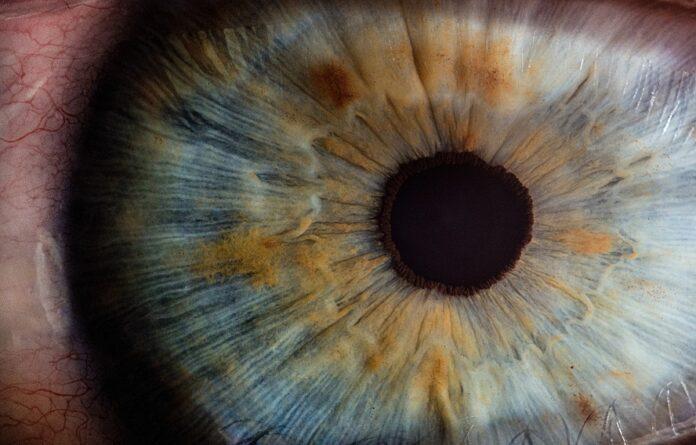Scientists have developed the first patient-derived stem cell model of albinism. The model will help studying eye conditions related to oculocutaneous albinism (OCA).
Stem cells are unspecialised. They cannot do any specific function in the body but they can divide and renew themselves over a long time and have potential to become specialized and develop into many different types in the body such as muscle cells, blood cells, brain cells etc.
Stem cells are present in our bodies at all stages of life, from embryo to adulthood. Embryonic stem cells (ESCs) or fetal stem cells are seen in the earliest stage while adult stem cells which serve as a repair system for the body are seen in adulthood.
Stem cells can be grouped into four: embryonic stem cells (ESCs), adult stem cells, cancer stem cells (CSCs) and induced pluripotent stem cells (iPSCs). Embryonic stem cells (ESCs) are derived from inner mass cells of the blastocyst-stage of mammalian embryo that are three to five days old. They can self-renew indefinitely and differentiate into cell types of all three germ layers. On the other hand, adult stem cells serve as a repair system to maintain cell homeostasis in tissues. They can replace dead or injured cells but have limited proliferation and differentiation potential in comparison with ESCs. Cancer stem cells (CSCs) arise from normal stem cells that undergo gene mutations. They initiate tumours forming a large colony or clones. Cancer stem cells play important roles in malignant tumours hence targeting them could provide a way to treat cancers.
Induced pluripotent stem cells (iPSCs) are derived from adult somatic cells. Their pluripotency is artificially induced in the laboratory by reprogramming somatic cells through genes and other factors. iPSCs are like embryonic stem cells in proliferation and differentiation. The first iPSC was developed from murine fibroblasts by Yamanaka in 2006. Since then, several human iPSCs have been developed from patient-specific samples. Since the genetics of the patient is reflected in the genetics of the iPSCs, these reprogrammed somatic cells are used to model genetic diseases and have revolutionized the study of human genetic disorders.
A model is an animal or cells that display all or some of the pathological processes observed in an actual disease. Availability of an experimental model is important for understanding development of disease at cellular and molecular levels which helps in developing therapies to treat. A model helps in understanding how the disease develops and in testing potential treatment approaches. For example, one can identify effective drug targets with the help of a model or screen small molecules that could reduce severity and halt progression of the disease. Animal models have long been used but have several disadvantages. Further, animal models are unsuitable for genetic disorders due to genetic dissimilarities. Now, human stem cells (embryonic and induced pluripotent) are increasingly used to model human diseases.
Disease modeling using human iPSCs have successfully been done for several conditions such as lateral sclerosis, blood disorders, diabetes, Huntington’s disease, spinal muscular atrophy etc. There are good number of human iPSC models of human neural diseases, congenital heart diseases and other genetic disorders.
However, human iPSC model of albinism was not available until 11 January 2022 when the scientists at the National Eye Institute (NEI) which is a part of the National Institutes of Health (NIH) reported development of a human iPSC-based in vitro model for oculocutaneous albinism (OCA)
Oculocutaneous albinism (OCA) is a genetic disorder affecting pigmentation in the eye, skin, and hair. The patients suffer eye problems like reduced best-corrected visual acuity, reduced ocular pigmentation, abnormalities in fovea development, and/or abnormal crossing of optic nerve fibres. It is thought that improving eye pigmentation could prevent or rescue some of the vision defects.
The researchers developed an in-vitro model for studying pigmentation defects in human retinal pigment epithelium (RPE) and showed that the retinal pigment epithelium tissue derived in vitro from patients recapitulates the pigmentation defects seen in albinism. This is very interesting in view of the fact that animal models of albinism are unsuitable and there is limited human cell lines to study melanogenesis and pigmentation defects. The patient-derived OCA1A- and OCA2-iPSCs developed in this study can be a renewable and reproducible source of cells for the production of target cell and/or tissue types. In vitro derived OCA tissues and OCA-iRPE will allow deeper understanding of how melanin formation takes place and identify molecules involved in pigmentation defects, and further probe for molecular and/or physiologic differences.
This is a very significant step forward towards the goal of treatment of oculocutaneous albinism (OCA) related conditions.
***
References:
- Avior, Y., Sagi, I. & Benvenisty, N. Pluripotent stem cells in disease modelling and drug discovery. Nat Rev Mol Cell Biol 17, 170–182 (2016). https://doi.org/10.1038/nrm.2015.27
- Chamberlain S., 2016. Disease modelling using human iPSCs. Human Molecular Genetics, Volume 25, Issue R2, 1 October 2016, Pages R173–R181, https://doi.org/10.1093/hmg/ddw209
- Bai X., 2020. Stem Cell-Based Disease Modeling and Cell Therapy. Cells 2020, 9(10), 2193; https://doi.org/10.3390/cells9102193
- George A., et al 2022. In Vitro Disease Modeling of Oculocutaneous Albinism Type I and II Using Human Induced Pluripotent Stem Cell-Derived Retinal Pigment Epithelium (2022). Stem Cell Reports. Volume 17, Issue 1, P173-186, January 11, 2022 DOI: https://doi.org/10.1016/j.stemcr.2021.11.016
***






































